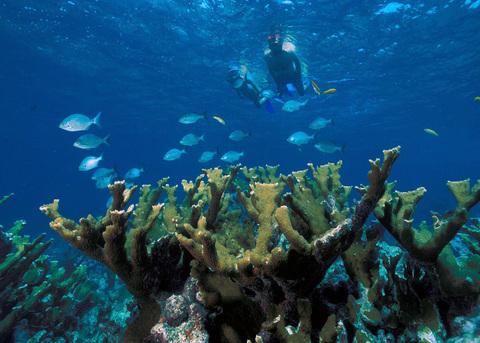Having already seen snow this fall in the Rockies, the thought of heading to a nice, warm patch of sand being slapped by warm Atlantic waters sounds pretty good right about now. And if airfares weren't what they are, a quick jaunt to Biscayne National Park to commemorate the park's birthday would seem just about right.
I mean, really, doesn't that sound like a great respite from the early teasing of winter?
While Biscayne was tabbed a national monument on this date back in 1968, it achieved full national park status back in June 1980. What's the difference in a name? Well, really not that much, aside from better marketing for the surrounding communities and perhaps a bit more clout when it comes to seek congressional appropriations.
What's more significant than the name change, though, is what the national monument status bestowed with a few flicks of President Lyndon Johnson's pen accomplished. Back in the 1960s there were efforts to develop a petrochemical plant on Biscayne Bay's shoreline. Pretty much paralleling that situation were desires to turn the islands now protected by the national park into part of a city to be called "Islandia."
Well, suffice to say all those plans came to a screeching halt on October 18, 1968, when President Johnson signed the legislation that set aside the monument.
Still, 40 years later the park's landscape still is under siege. If you recall, earlier this summer the Ocean Conservancy issued a report contending that the National Park Service has done a poor job protecting Biscayne's resources. Overly permissive recreational and fishing policies endorsed by the Park Service have brought the park's unique coral reefs to a state of "imminent" collapse, the group said back in July.
Of course, pollution, boating, and water quality problems in general are contributing to the corals' downfall, as well.
Why is it we as a society have such a hard time preserving these unique landscapes?
That said, I'd still like to head off for a quick dose of Biscayne. While Chesapeake Bay might be home to the only national historic trail that you can paddle, Biscayne counters with a "Maritime Heritage Trail" that allows you to dive on shipwrecks that span nearly a century of maritime history.
And the thought of diving into the park's landscape -- 95 percent of which is underwater -- to take in the vibrantly colored fisheries before it's too late sounds awfully good as well. Perhaps if more folks did just that they'd see firsthand some of the problems this park is confronted by and put a little more pressure on the powers that be to come up with some solutions before it gets too late.




Add comment